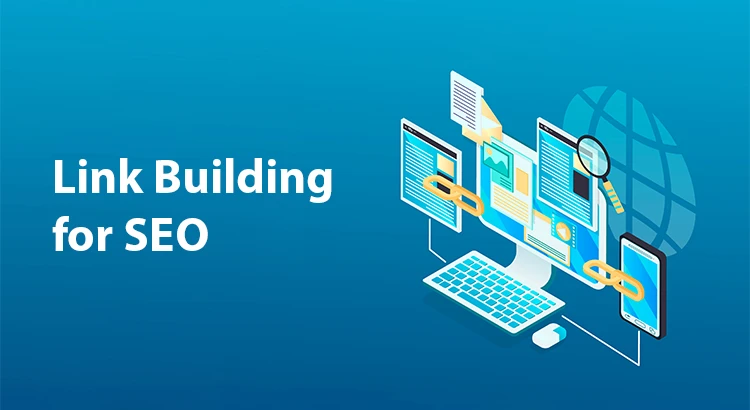Link building for SEO helps your website grow its authority and visibility across the web. It is a key part of off-page SEO, improving how your pages rank in search results. Beginners often find it challenging, but understanding the fundamentals can lead to lasting success. This article walks you through the techniques of getting high-quality backlinks the right way.
What Is Link Building in SEO?
It is the process of acquiring links from external websites to your own pages. These links act like votes of confidence, signaling that your material is trustworthy and relevant. Search engines use these signals to evaluate the authority of a website, which influences how pages appear in rankings. While not all backlinks are equal, those from reputable domains can significantly boost site performance.
Importance of Getting Backlinks
are some key benefits of building a strong link profile and how each one supports website growth.
1. Boosts Website Credibility
When other reputable websites link to yours, it signals to search engines that your material is valuable and reliable. This builds trust not only with algorithms but also with users who see your site mentioned on respected platforms.
2. Improves Search Visibility
High-quality backlinks can help your pages rank higher in search results. These external references act as trust signals, making it easier for your material to surface when users look for relevant information.
3. Drives Referral Traffic
Visitors who click on your links from other websites can become part of your audience. Unlike search traffic, referral visits often come from people already interested in your niche, increasing the chances of engagement and conversions.
4. Supports Long-Term Ranking Stability
A diverse and natural backlink profile protects your site from sudden ranking drops. If your material is backed by multiple high-quality sources, it becomes less vulnerable to algorithm updates.
5. Encourages Brand Mentions and Authority
Consistent outreach and content promotion can lead to more mentions of your site across the web. These mentions help build your brand presence and establish your expertise in your industry.
6. Accelerates Indexing of New Pages
Search engines often discover new pages faster when they’re linked from already indexed and authoritative domains. This can speed up the visibility of fresh material.
Link Building Strategies
Take a look at the best practices to acquire backlinks in an ethical and effective way.
1. Create Shareable Content
Helpful, original material that answers real user questions often attracts organic mentions. The more useful and well-presented your pages are, the more likely others will reference them. Here are several formats and techniques that work well:
- Publish comparison guides (e.g., tools, products, services) with detailed pros and cons
- Offer downloadable templates, checklists, or planners that save users time
- Create list-style material (e.g., “Top 50 tools for …”) with up-to-date, curated entries
- Compile expert roundups where industry professionals contribute quotes or insights
- Share results from your own experiments, case studies, or user surveys
- Develop evergreen resources that stay relevant long-term and continue attracting links
- Produce bite-sized educational material that can be embedded or reused by others
- Embed short explainer videos or animations that visually support your points
- Write opinionated or contrarian takes on industry topics that spark discussion
- Create timelines or historical overviews of trends in your niche
Investing time in material that educates, informs, or solves problems increases its chances of earning backlinks naturally.
2. Guest Posting
Writing for other blogs or websites in your industry remains one of the most effective outreach methods. Guest posting allows you to showcase your expertise to new audiences and include contextual links back to your own material.
Focus on relevant platforms with engaged readers and avoid overly promotional submissions. The key is to provide genuine value and thoughtful material that aligns with the host site’s tone and standards.
3. Broken Link Outreach
Web content becomes outdated, and links often break over time. This creates an opportunity for you to step in and offer your relevant page as a replacement.
You’ll need tools to identify dead links on related websites. After spotting a broken link, reach out to the site owner, let them know about the issue, and suggest your page as a suitable alternative. It’s a win-win: you help fix their content while gaining a backlink.
4. Business Listings and Directories
Adding your website to trusted online directories helps with both visibility and acquiring foundational backlinks. These platforms often include a section to link your website, which can contribute to your site’s credibility.
Choose directories relevant to your niche or region. Be sure to use consistent business information across listings, including name, address, and contact details.
5. HARO and PR Opportunities
Responding to journalist queries through platforms like HARO (Help a Reporter Out) or Qwoted gives you the chance to be cited in high-authority publications.
When you provide expert commentary or insights, journalists may quote you and include a backlink to your site. Timely responses and well-written submissions improve your chances of being selected and featured.
6. Skyscraper Technique
This method involves finding popular content in your niche, improving it, and reaching out to the websites that linked to the original version.
You can enhance the content by:
- Adding more recent data or updated examples
- Improving structure, readability, or design
- Offering deeper insights or a broader scope
Once your upgraded content is ready, share it with those who previously linked to similar pages and explain why yours offers more value.
7. Build Links with Images
Original visual assets can generate links when others use or share them with attribution. These could be anything from charts and custom illustrations to branded infographics.
Publish the visuals on your site with proper licensing or instructions on how others can embed them. You can also upload them to visual-sharing platforms or include them in guest content to increase exposure.
8. Reclaim Lost Backlinks
Over time, some links may be lost due to deleted content, URL changes, or website updates. By monitoring your backlink profile, you can identify which ones are worth recovering.
If the content still exists but the URL has changed, set up redirects or update internal links. For backlinks that were removed unintentionally, a polite outreach email to the referring site can sometimes restore them.
9. Connect with Other Industry Experts
Engaging with professionals in your field can lead to natural linking opportunities. These may come through collaborations, interviews, or simply being referenced in their content.
Participate in forums, LinkedIn groups, or virtual events where your peers are active. Genuine networking efforts often result in long-term visibility and mutual backlinks without having to ask.
10. Publish Case Studies and Testimonials
Highlighting a successful project, client experience, or service interaction creates content that others may want to reference. Additionally, when you give testimonials for tools or services you’ve used, those companies may publish your comment along with a link to your site.
This type of material builds authority and earns attention from both readers and businesses.
Closing Notes
A thoughtful approach to link building is key to long-term success in site optimization. Quality always matters more than quantity, so focus on building relationships and earning backlinks from trusted sources. By understanding the right tips and staying consistent, your website can steadily grow its visibility and authority. Use this guide as your starting point for smarter backlink acquisition.


